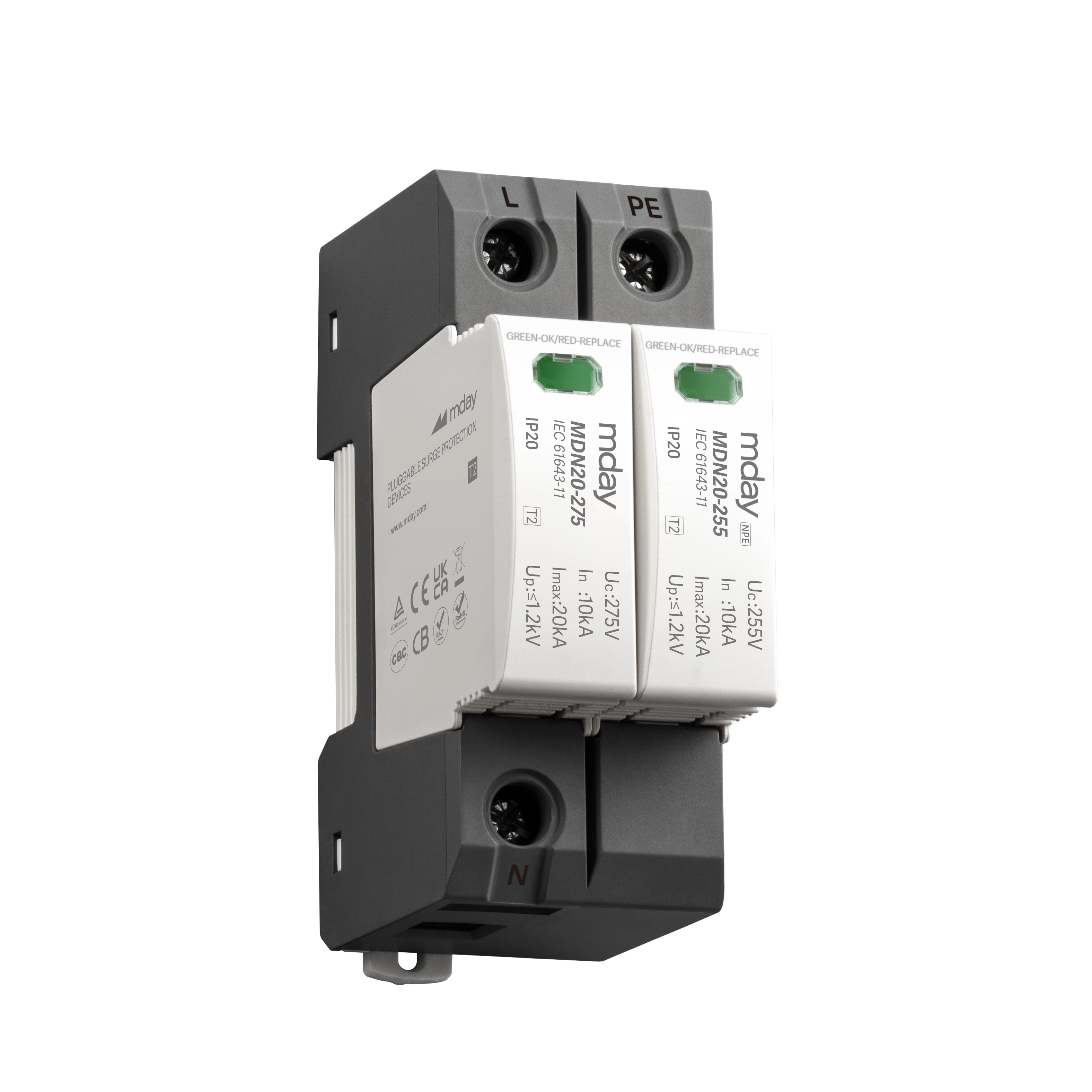The first line of defensing against surges
The first line of defensing against surges
The aim is to prevent surge voltages from being conducted directly from the LPZ0 zone to the LPZ1 zone and to limit surge voltages of tens of thousands to hundreds of thousands of volts to 2500-3000V. The power surge arrester installed on the low-voltage side of the household power transformer should be shielded by a three-phase voltage switching power supply as the first level of protection, and its lightning flux should not be less than 60KA.
This level of power surge protector should be a large-capacity power supply lightning protector connected between the phases of the inlet line of the user power supply system and the earth. Generally, the power supply lightning protector of this stage is required to have a maximum shock capacity of more than 100KA per phase, and the required limit voltage is less than 1500V, which is called the CLASSI class power surge protector.
These electromagnetic lightning protectors are designed to withstand high currents of lightning and induction lightning strikes and to attract high energy surges, which divert large amounts of inrush current to the earth. They only provide a medium level of protection for the limited voltage (the maximum voltage that occurs on the line when the inrush current flows through the power supply lightning protector) for medium protection, because the CLASSI class protector mainly absorbs large inrush current, and they alone cannot completely protect the sensitive electrical equipment inside the power supply system.
The first line of power surge protector can protect against 10/350μs, 100KA lightning waves, meeting the highest protection standards stipulated by IEC. Its technical reference is: lightning flux greater than or equal to 100KA (10/350ys); residual pressure value is not greater than 2.5KV; response time is less than or equal to 100ns







